Abstract
Two cohorts of women born in 1914-18 and 1929-33 who participated in a cervical screening programme have been followed for over 40 years. Age-specific incidence rates of squamous carcinoma of the cervix by rank of smear and length of interval between smears are reported. The younger cohort, who had undergone more frequent screening, had lower rates of invasive disease. From these incidence rates, estimates of false-negative rates and regression rates for carcinoma in situ have been made. The false-negative rate was estimated to be about 15%. Regression seemed more frequent in younger than in older women. For the younger cohort it was estimated to be 72% and in the older 47%. A comparison of the rates of in situ carcinoma with those of invasive disease suggests that the screening of the younger cohort reduced the rate of invasive disease to at least one-half or one-third of what it would have been if screening had commenced later. Rates of disease appear less dependent on age than previously thought and are consistent with causation by an infective agent.
Full text
PDF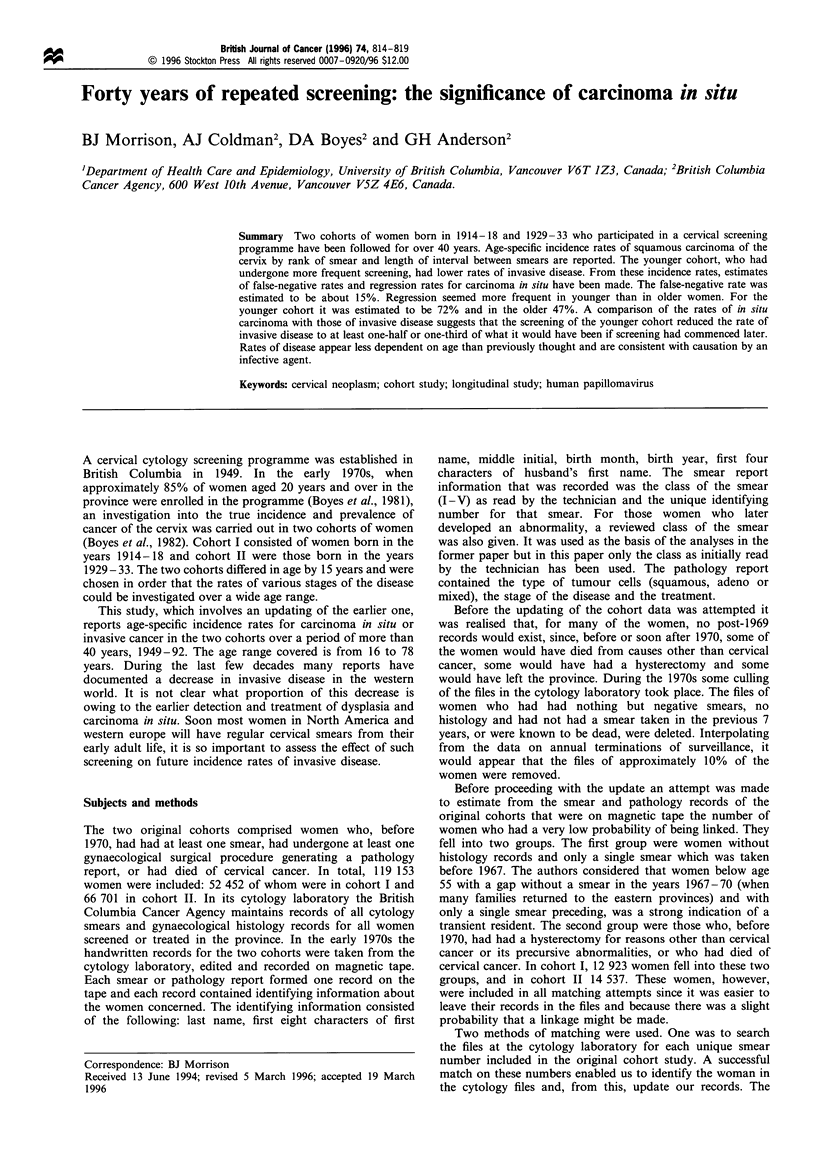
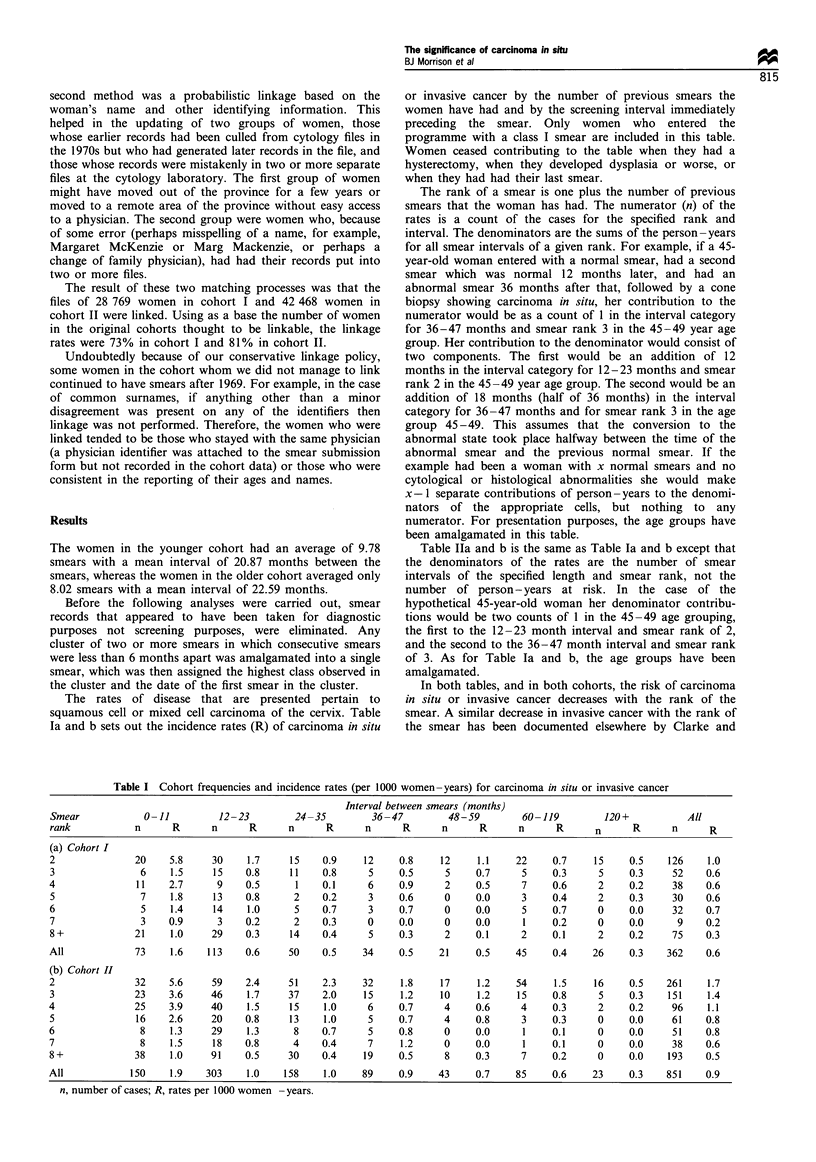
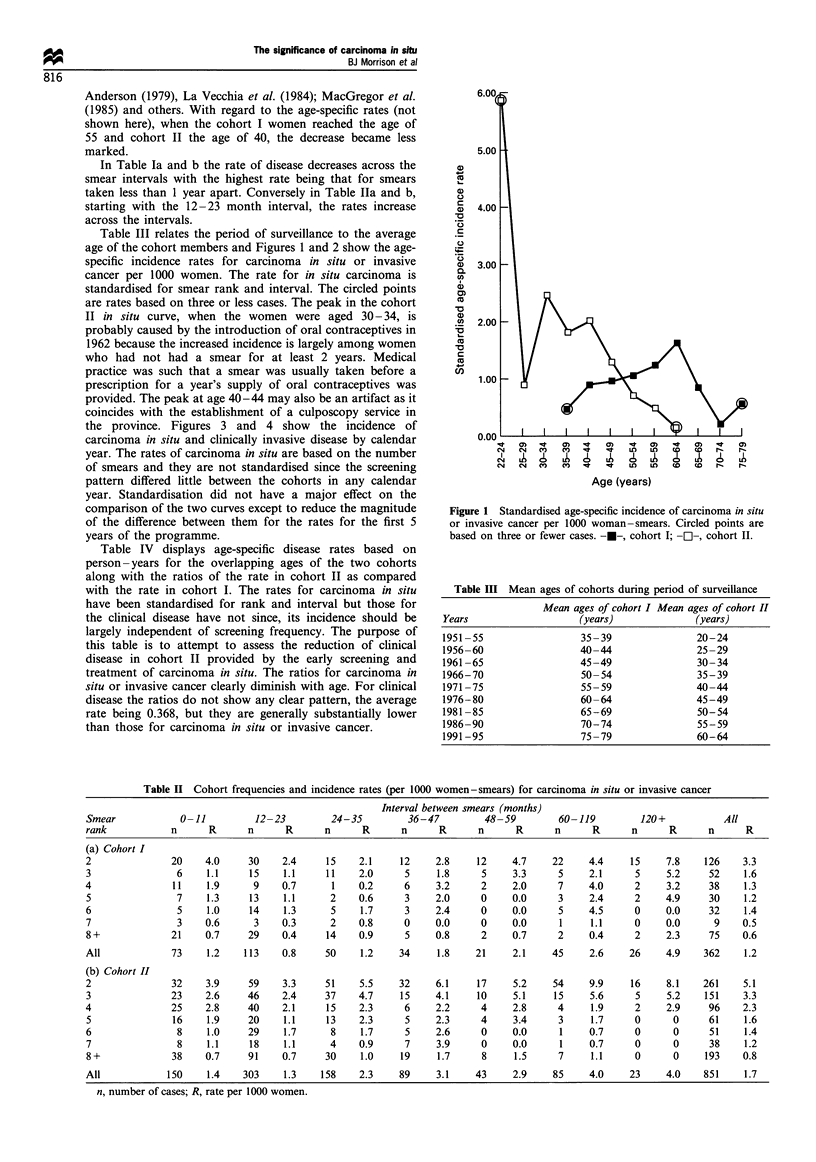

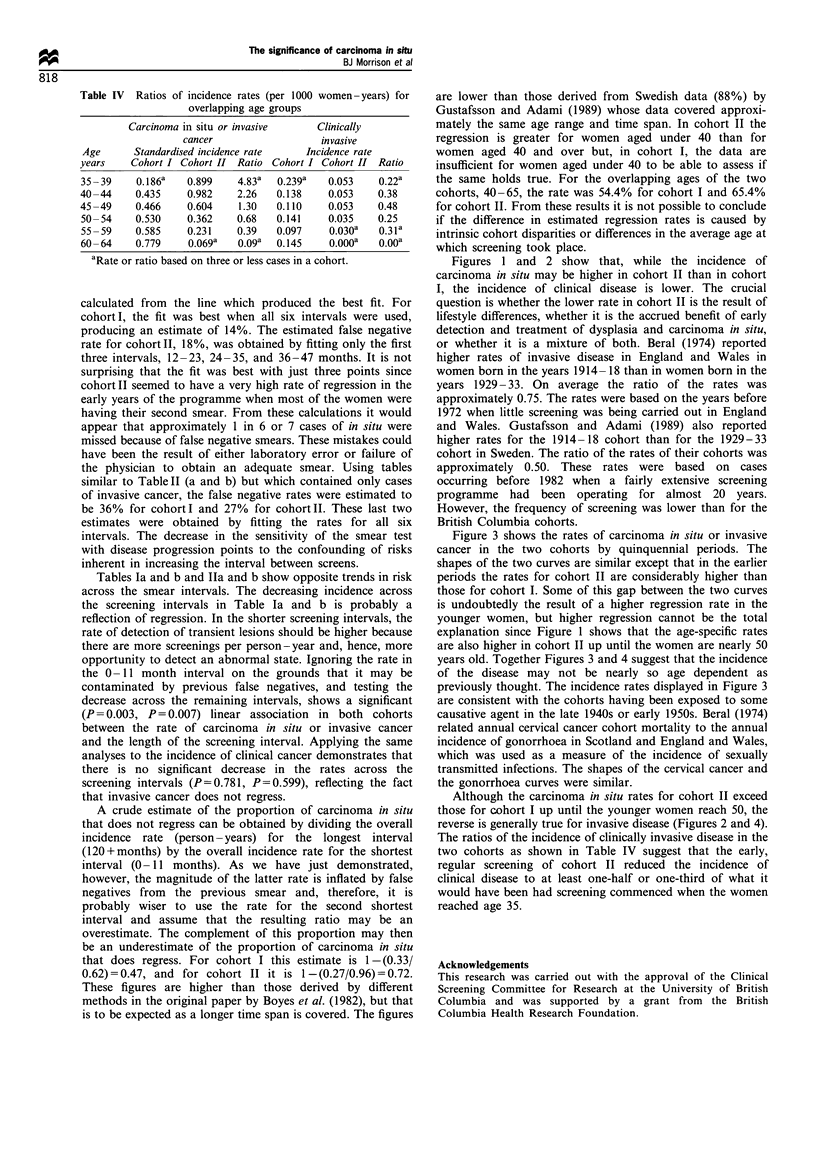
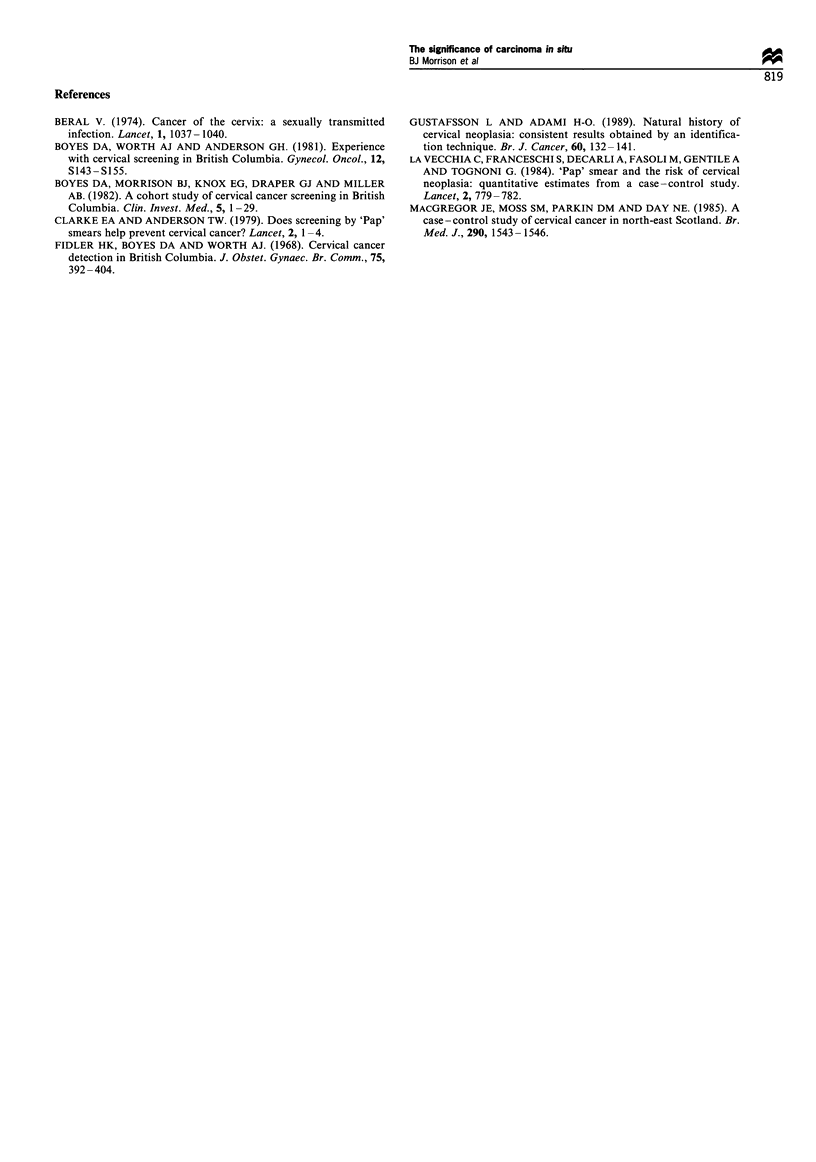
Selected References
These references are in PubMed. This may not be the complete list of references from this article.
- Beral V. Cancer of the cervix: a sexually transmitted infection? Lancet. 1974 May 25;1(7865):1037–1040. doi: 10.1016/s0140-6736(74)90432-2. [DOI] [PubMed] [Google Scholar]
- Boyes D. A., Morrison B., Knox E. G., Draper G. J., Miller A. B. A cohort study of cervical cancer screening in British Columbia. Clin Invest Med. 1982;5(1):1–29. [PubMed] [Google Scholar]
- Boyes D. A., Worth A. J., Anderson G. H. Experience with cervical screening in British Columbia. Gynecol Oncol. 1981 Oct;12(2 Pt 2):S143–S155. doi: 10.1016/0090-8258(81)90070-6. [DOI] [PubMed] [Google Scholar]
- Fidler H. K., Boyes D. A., Worth A. J. Cervical cancer detection in British Columbia. A progress report. J Obstet Gynaecol Br Commonw. 1968 Apr;75(4):392–404. doi: 10.1111/j.1471-0528.1968.tb00136.x. [DOI] [PubMed] [Google Scholar]
- Gustafsson L., Adami H. O. Natural history of cervical neoplasia: consistent results obtained by an identification technique. Br J Cancer. 1989 Jul;60(1):132–141. doi: 10.1038/bjc.1989.236. [DOI] [PMC free article] [PubMed] [Google Scholar]
- La Vecchia C., Franceschi S., Decarli A., Fasoli M., Gentile A., Tognoni G. "Pap" smear and the risk of cervical neoplasia: quantitative estimates from a case-control study. Lancet. 1984 Oct 6;2(8406):779–782. doi: 10.1016/s0140-6736(84)90705-0. [DOI] [PubMed] [Google Scholar]
- Macgregor J. E., Moss S. M., Parkin D. M., Day N. E. A case-control study of cervical cancer screening in north east Scotland. Br Med J (Clin Res Ed) 1985 May 25;290(6481):1543–1546. doi: 10.1136/bmj.290.6481.1543. [DOI] [PMC free article] [PubMed] [Google Scholar]


